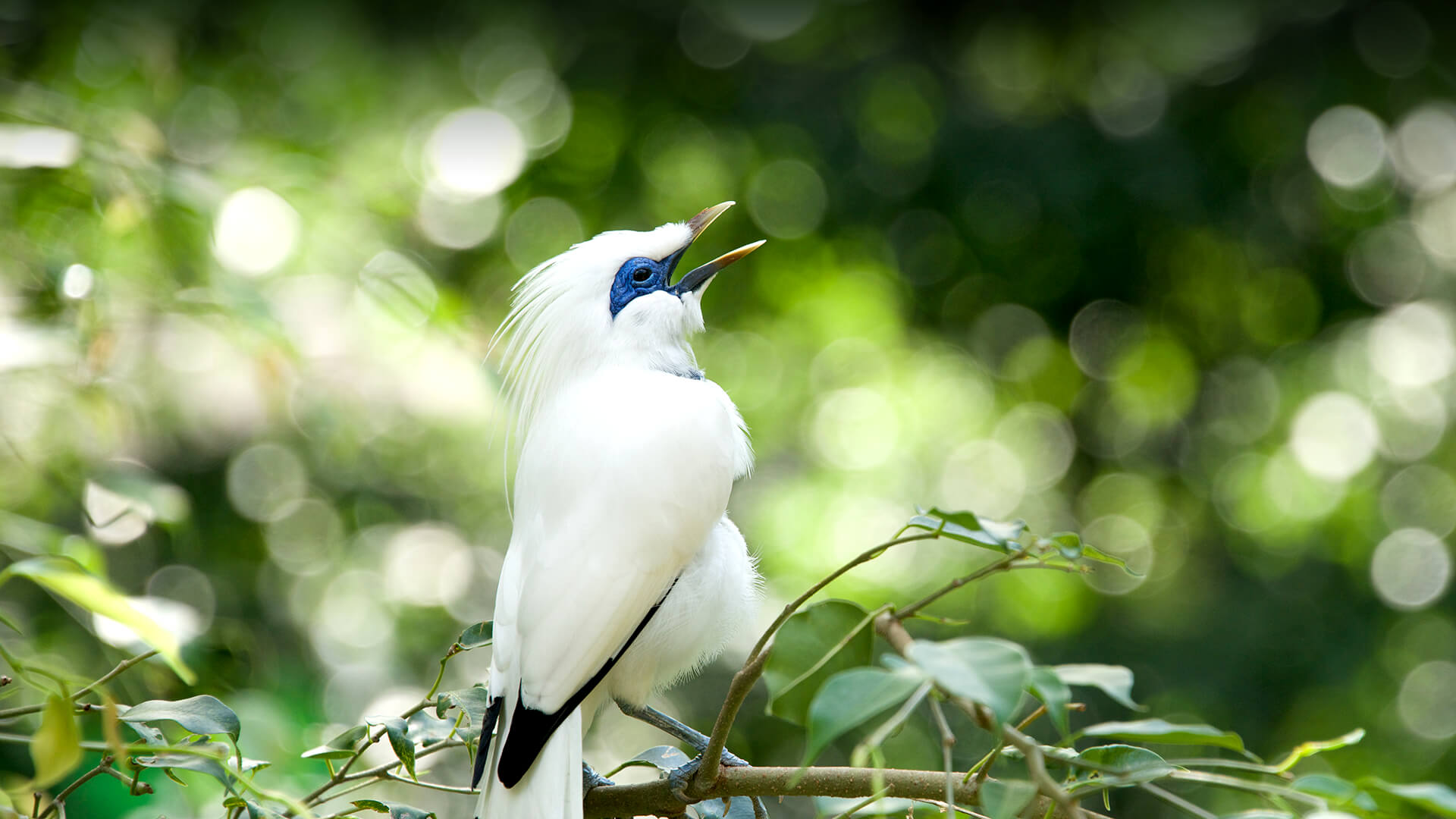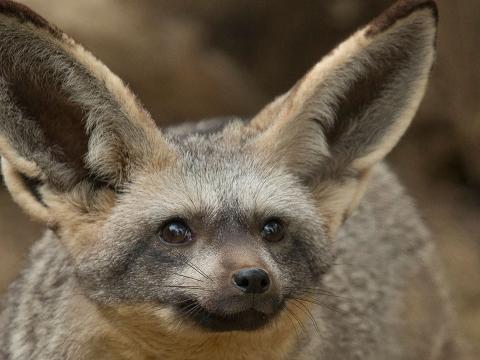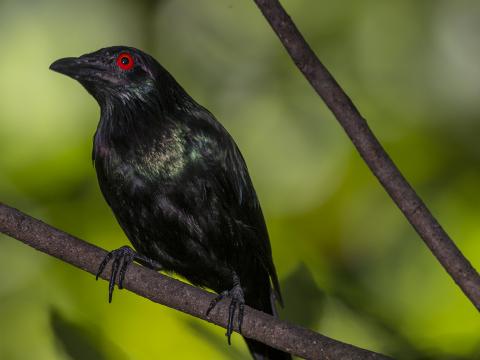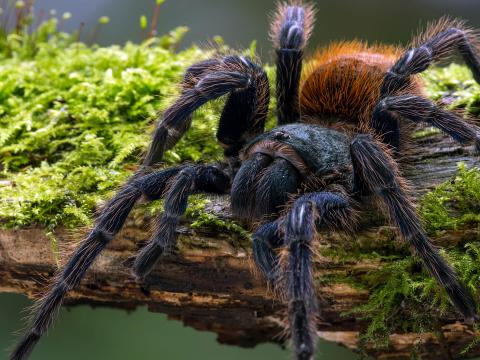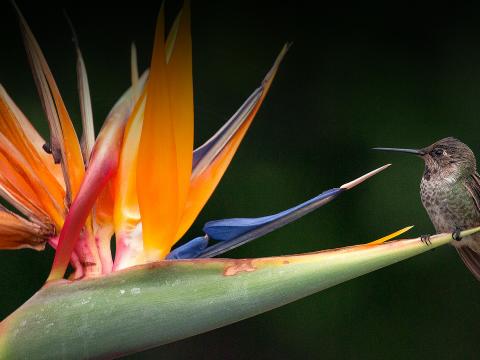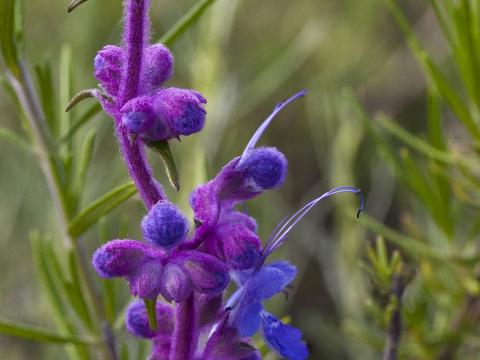Bali Myna
- Class: Aves (Birds)
- Order: Passeriformes
- Family: Sturnidae
- Genus: Leucopsar
- Species: rothschildi
ABOUT
Beautiful and mysterious. The Bali myna is a beautiful, snow-white bird with black tips on wing and tail feathers and striking sky-blue patches of skin around its eyes. The male and female are almost identical, although the delicate, lacy head crest extending down the back of the neck may be a bit longer on the male. Its beauty is probably why this bird's likeness is used in much of the cultural art found on the island of Bali in Indonesia. The Bali myna or Bali starling is found in one small region of Bali, an island that is smaller than the size of Rhode Island.
Scientists discovered the Bali myna in 1912. The bird was originally called the Rothschild’s grackle for Lord Walter Rothschild, a British ornithologist who financed the collecting of this species. The species name rothschildi also comes from the ornithologist.
Members of the starling family, not a lot of research has been done on Bali mynas. What we do know comes mostly from studying the mynas in zoos.
HABITAT AND DIET
Bali mynas occupy the mountain regions along the north coast of Bali. Usually, the birds are found in flocks of 20 to 30 in those areas not already occupied by other kinds of starlings. They live in the holes of trees and line their nests with leaves, the stems of dried plants, and feathers. Their nests are home to the several clutches of eggs they may have each year.
They seem to breed between November and April, which is the rainy season for Bali. The entire population of Bali mynas usually gathers in the 740-acre (300-hectare) section of Bali Barat National Park to pair up and breed.
Bali mynas eat insects, such as ants and termites, caterpillars, dragonflies, and grasshoppers, and fruit, including figs, papayas, and nectar. They may also eat worms and small reptiles. Insects seem to be most plentiful in Bali during the rainy season, January through April. Perhaps this is why the mynas have their breeding season at that time.
At the San Diego Zoo and San Diego Zoo Safari Park, the Bali mynas eat chopped melon, papaya, and apple, low-iron pellets, and mealworms and crickets.
FAMILY LIFE
Both aggression and courtship are demonstrated similarly: the bird raises its head crest, points its bill to the sky, and bobs its body about. Along with this impressive display are some unique vocalizations, almost defying description. There are deep hisses, trills, and a series of vibrating notes generally accompanied by raucous, whistling chirps. During these songs, the chest is expanded and the plumage fluffed. A fan-shaped spreading of the tail feathers concludes the display.
If courtship is intended, the female sidles closer to the displaying male and preens his neck and chest areas. This attention is rewarded when he preens her in turn.
Bali mynas appear to be monogamous, and once a pair bond has been established, both partners vigorously display and vocalize to announce territorial ownership and discourage intruders. Any invaders are met with persistent aerial chases and attacks. It is generally the male that initiates these flying pursuits, but the female often participates as vigorously as the male.
Prospective parents build a nest together, using grass, small leaves, and feathers, in a natural tree hole. The completed nest has a well-formed cup in the middle for the eggs. Bali mynas may produce two to three clutches during this time with two to three eggs per clutch. The eggs are bluish green, and both the mother and father incubate the eggs. The parents feed the chicks and take turns carrying food back to the nest in their beak. The young fledge in 12 to 28 days and continue to be fed by their parents for a few more weeks. They molt into their adult plumage within a few months after leaving the nest.
CONSERVATION
Why are Bali mynas in trouble? Even though they are only found in a small part of the world, it would seem like the Bali mynas, also known as Bali starlings, have everything they need to flourish: a good supply of food, lots of chicks, and a national park in which to live. So what is the problem? One simple word: humans.
The beauty of the birds has attracted people in the cage-bird trade. In Denpasar, Bali's capital, there is a thriving bird market. Thousands of different birds are crammed into cages and sold for one or two dollars each. Because of the rarity of the Bali myna, the bird markets can charge higher prices for them. Having a Bali myna in a private collection is considered a status symbol, so poachers are encouraged to continue to capture these endangered birds for the pet trade.
People moving into the bird's habitat have also caused the Bali myna's decline. The booming tourist industry in Bali has seen the human population triple in the past 70 years, and a large camp for coconut plantation workers was established in the national park.
Mynas need your help. Much effort has been made to help the Bali mynas recover. The Bali Starling Project has made efforts to help guard the Bali Barat National Park, where the birds live, from illegal trapping and has reintroduced birds hatched in human care to help the tiny population grow. In 1987, 10 Bali mynas hatched by San Diego Zoo Wildlife Alliance were part of a larger group of 40 Bali mynas from US zoos that were moved to the Surbaja Zoo in Indonesia to form a breeding group, with resulting offspring reintroduced to the wilderness. In 2009, Bali mynas raised in managed care were introduced to a neighboring island, Nusa Penida, and seem to be doing well.
When enough people listen to the story of the Bali myna and realize that having a Bali myna for a pet is not a good idea, then efforts may again be made to reintroduce them to the wilderness. Until then, zoos are caring for mynas for the long term and are hoping to keep the genetic population varied in the managed population. San Diego Zoo Wildlife Alliance is involved with the Bali Myna Species Survival Plan (SSP), as are other zoos that care for Bali mynas. The Bali Myna SSP has records of every Bali myna in managed care and which mynas they are most closely and distantly related to. The SSP then advises each zoo which birds should breed with which for maximum genetic diversity.
You can help discourage poachers by never purchasing a pet that has come from the wilderness. Many exotic wildlife might seem like a fun idea for a pet, but in reality they are not what you expected. They can be very hard to care for and could even be illegal to own in your state!
You can help protect Bali mynas and other birds by supporting San Diego Zoo Wildlife Alliance. Together we can save wildlife worldwide.

